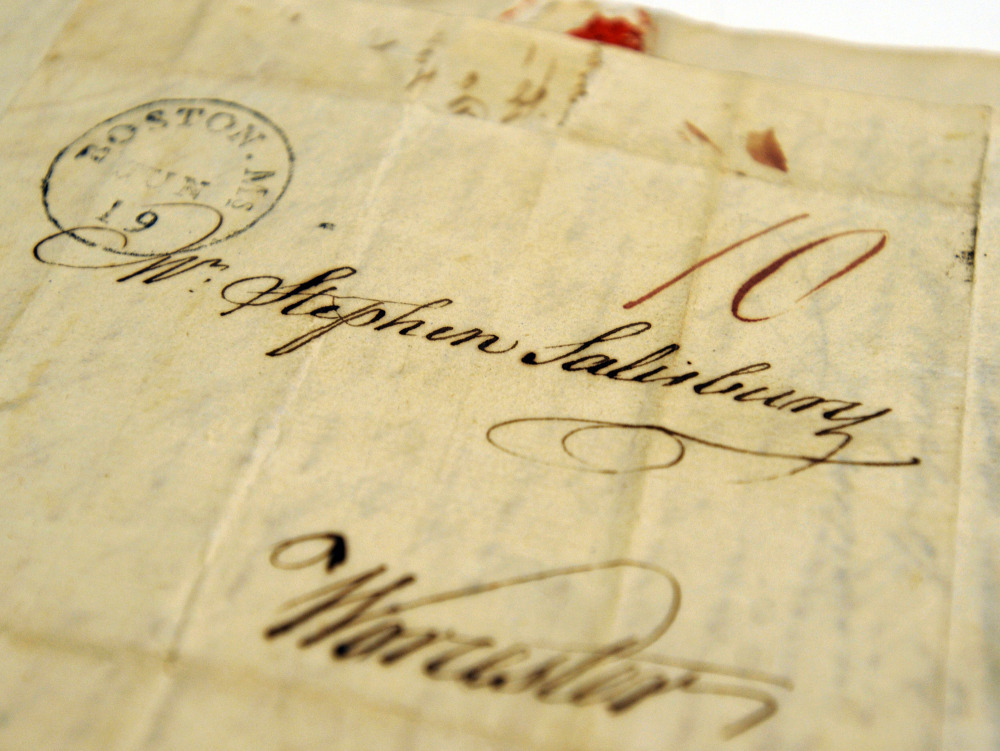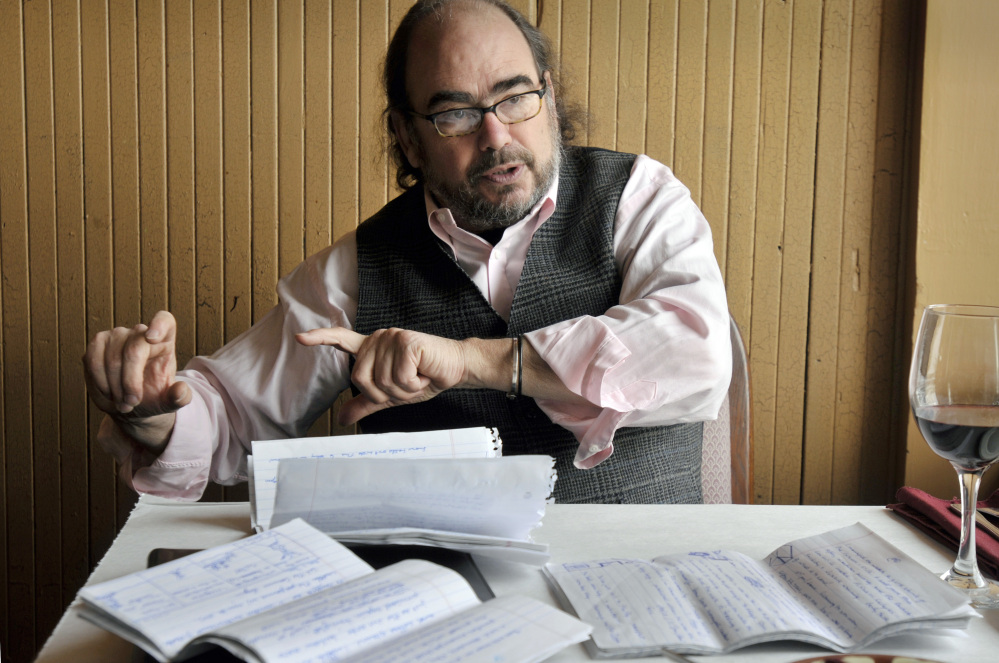WORCESTER, Mass. — Literary scholars, librarians and letter lovers are commiserating about and trying to come to terms with the demise of letter writing. And they are not alone.
In his 2013 book, “To the Letter: A Celebration of the Lost Art of Letter Writing,” The New York Times best-selling author Simon Garfield asked the question, “How will we be able to tell our history without letters?”
Garfield said he doesn’t think the answer lies with emails.
“A world without letters would surely be a world without oxygen,” Garfield declares in his book, which is both a celebration and lamentation of letter writing.
A little overdramatic perhaps, but in the day and age of emails, Facebook, texting and tweeting, letter-writing is certainly a lost art form and only time will tell the impact this loss will have, if any, on society, history, literature and culture.
Worcester State University English professor Jonathan E. Blake said he already sees the detrimental effects the demise of letter writing has had on his students. Blake, an avid letter writer, started a regular writing correspondence with state Department of Development Services’ social worker and Greenfield Community College English professor Bill O’Connell, when the two went to San Francisco and Colorado state universities, respectively, for grad school. After finishing their studies, they moved back to the area, and 30 years later, they are still writing letters to each other. When emails really started to become the rage, Blake said the two scholars made a solemn oath that emails would never replace each other’s letters. Today, Blake and O’Connell both have a dozen or so boxes of each other’s written correspondence.
“One of the things we began to realize, rather in a vain way, that in some respects, we have a historical document here,” Blake said.
In the day and age of emails, Facebook, texts and Twitter, Blake feels we have lost the fine art of letter writing and a majority of our electronically typed correspondences to each other have become trite, superficial and condensed.
“I don’t think when you get to that abbreviation, that allows for the depth of emotion or connection that letter writing allows for,” Blake insisted. “Text, tweets and emails are an instantaneous thing that disappears quickly, while a letter stays. One of the things about keeping letters as well, is you can return to them, like you can return to a book and you can see it in a different way.”
“And, another thing that is lost as well, there is no music to the (expletive) language that’s abbreviated. There’s no music to it whatsoever. So you don’t get caught up in somebody’s syntax. You don’t get carried away by how something unfolds.”
One of Blake’s WSU colleagues, assistant English professor Heather Treseler, is incrementally working on a research project on how selected Middle Generation poets’ letter-writing practices influenced their stylization of lyric address in the Cold War decade.
“For poets, like (Worcester native) Elizabeth Bishop and Robert Lowell … letters were a mainstay … but, also too, it really became part of their creative process,” she said.
Treseler said there’s a haptic quality in receiving a letter – the feel of the paper, the look of the handwriting, the very visceral feeling that the note came from the pages of somebody else’s life and is entering your own. And this quality cannot be convincingly represented on a computer screen, she said.
“Letters open a rhetorical space for reflection on one’s life at the moment and all of its happenstance, joy and difficulty,” she said. “I find myself drawn to the form because it provides both that reflective space and a way of maintaining our relationship at a certain level of depth that can’t quite be simulated by a phone call or even an email, necessarily.”
While it’s a thrill for her to receive a letter, Treseler said she thinks technology can be very useful. Personally, it allows her to correspond electronically with her youngest brother, who lives in Sweden, and her new nephew, in a way the occasional letter never could have.
Thomas G. Knoles, the Marcus A. McCorison Librarian at the American Antiquarian Society, has an intimate knowledge of the more than 100,000 handwritten letters, as well as 1,500 manuscript collections, spanning from 1630 to present day, that are housed in the society’s archives.
“Life was so different in the 19th century. People didn’t have television, computers or radios, any of the distractions that they have now,” Knoles said. “Between the fact that it was the only way of communicating with people who were local and the fact there was actually disposable time to write the letters, letter writing was something that was a common practice.”
So, at one time, was using the mail service to get those letters out. In fiscal 2014 first quarter results, the U.S. Postal Service reported a $354 million net loss from the same period last year and cites one of the contributing factors to be the continuing migration toward electronic communication.
While he feels the transition to the computer is a natural one, Knoles said there will be a whole texture of what everyday life was like that is going to be much harder to recapture because people don’t keep letters like they do emails and texts.
“We can grieve for anything that changes, but my own feeling is that you have to accept the fact that things are going to change,” Knoles said. “People grieved when the typewriter came. People grieved in the mid-19th century when the envelope was introduced and before that they used sealing wax.”
Send questions/comments to the editors.




Success. Please wait for the page to reload. If the page does not reload within 5 seconds, please refresh the page.
Enter your email and password to access comments.
Hi, to comment on stories you must . This profile is in addition to your subscription and website login.
Already have a commenting profile? .
Invalid username/password.
Please check your email to confirm and complete your registration.
Only subscribers are eligible to post comments. Please subscribe or login first for digital access. Here’s why.
Use the form below to reset your password. When you've submitted your account email, we will send an email with a reset code.